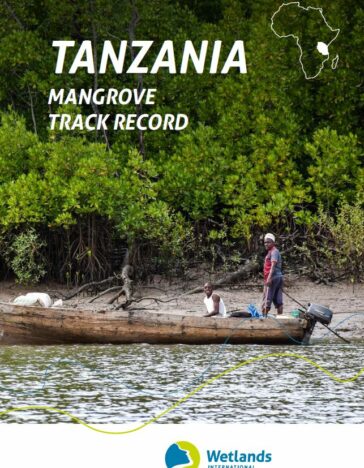
Tanzania Mangrove Track Record
-
Coasts & Deltas
Wetlands International works to safeguard and restore one million hectares of mangroves across 10 African countries, preserving biodiversity while benefiting approximately two million people.
Wetlands International has been operating in Tanzania since 2017, focusing its activities on the Rufiji Delta, which hosts East Africa’s largest mangrove forest, spanning 53,255 hectares.
The mangrove ecosystem in the Rufiji Delta is a vital habitat and a hotspot for bird migration, with at least 437 bird species reported there, including 13 that are globally threatened. A variety of fish species including juveniles of commercially important groups are found in the mangroves, which also shelter animals including crocodiles, hippos and baboons. Sea turtles nest on beaches secured by mangrove roots, and crabs and shrimp thrive in the shallows.
We’re working to halt and reverse the degradation and unsustainable exploitation of this invaluable ecosystem, collaborating closely with local and national stakeholders on a wide range of mangrove conservation and restoration activities, building social and ecological resilience in our target areas. As we create partnerships, raise awareness and develop effective strategic approaches to the challenges we face, we’re beginning to scale up our impact across Tanzania and the wider region.
Our impacts in Tanzania in a nutshell
- 53,000 hectares of mangroves with improved conservation status through participatory management planning, community patrols, capacity building, and targeted restoration efforts.
- 560 hectares of mangroves directly restored, and an additional 119 hectares indirectly, using the Community-Based Ecological Mangrove Restoration (CBEMR) approach to promote natural regeneration and enhance biodiversity.
- More than 4,185 people supported by the creation of sustainable alternative livelihoods, such as beekeeping, poultry farming, aquaculture, basketry, and rice farming outside the delta, reducing reliance on unsustainable mangrove resource extraction.
- National-level mangrove platform created, enabling efficient and effective mangrove conservation efforts at scale. Built strong relationships with national and local stakeholders, including the Tanzania Forest Service and district authorities, to ensure coordinated mangrove management and conflict resolution around resource use.
- Contributed to the update of the 1991 Rufiji Mangrove Management Plan, integrating community co-management and addressing climate change challenges.
- Enhanced patrolling and enforcement efforts by equipping the Tanzania Forest Service and village natural resource committees with tools.

